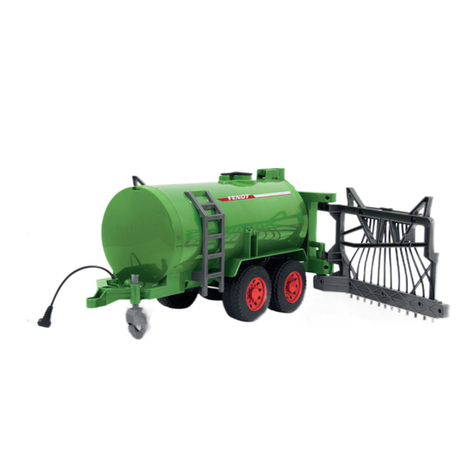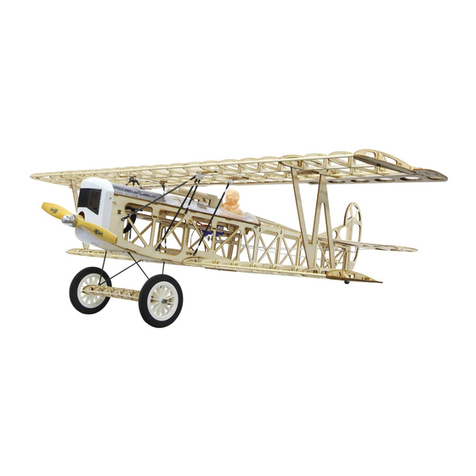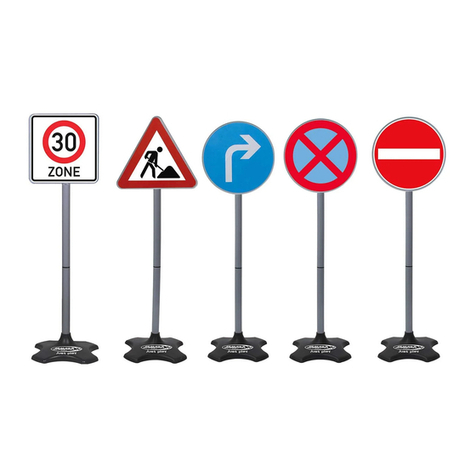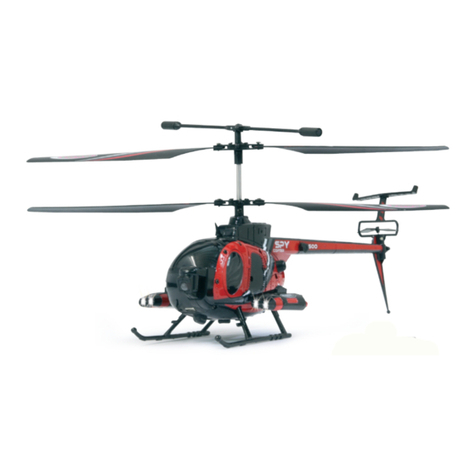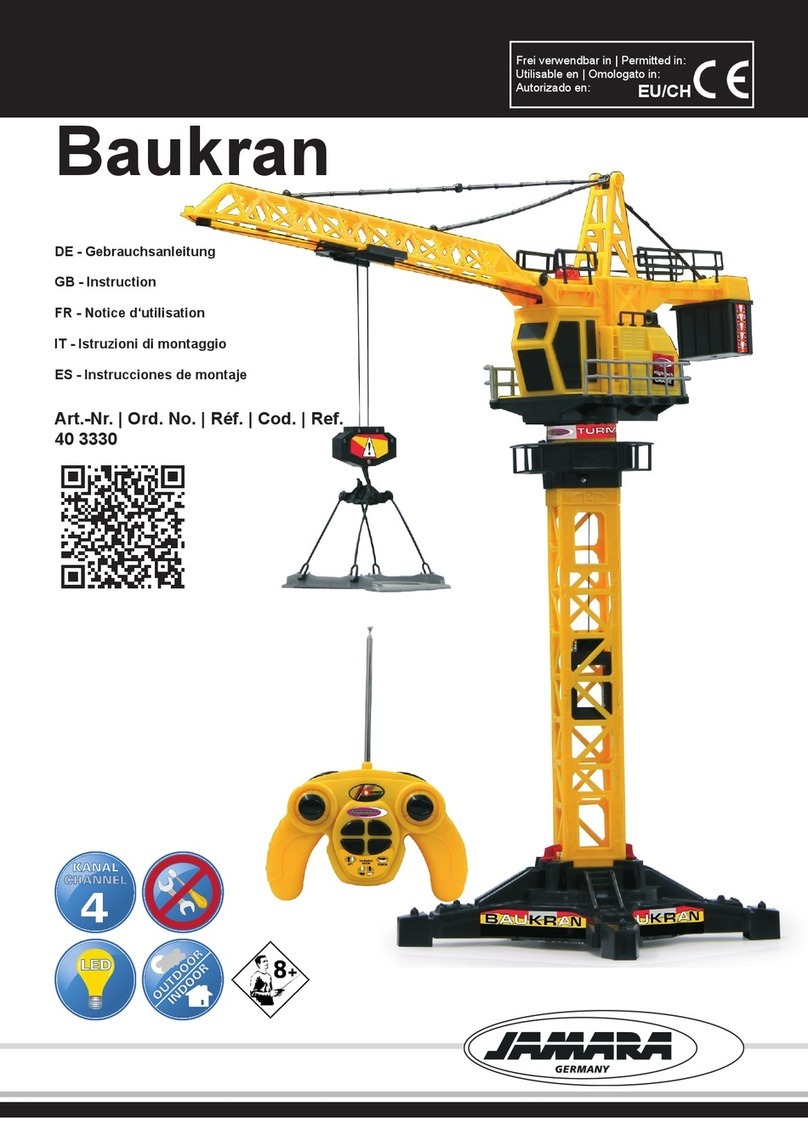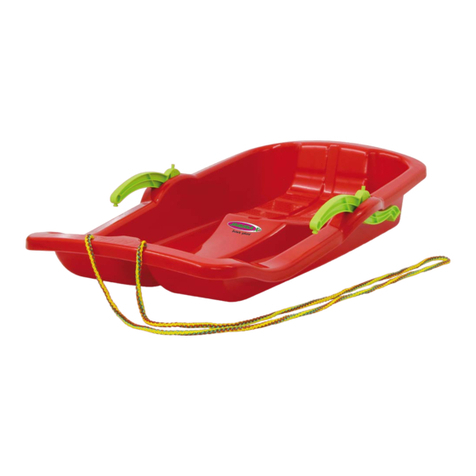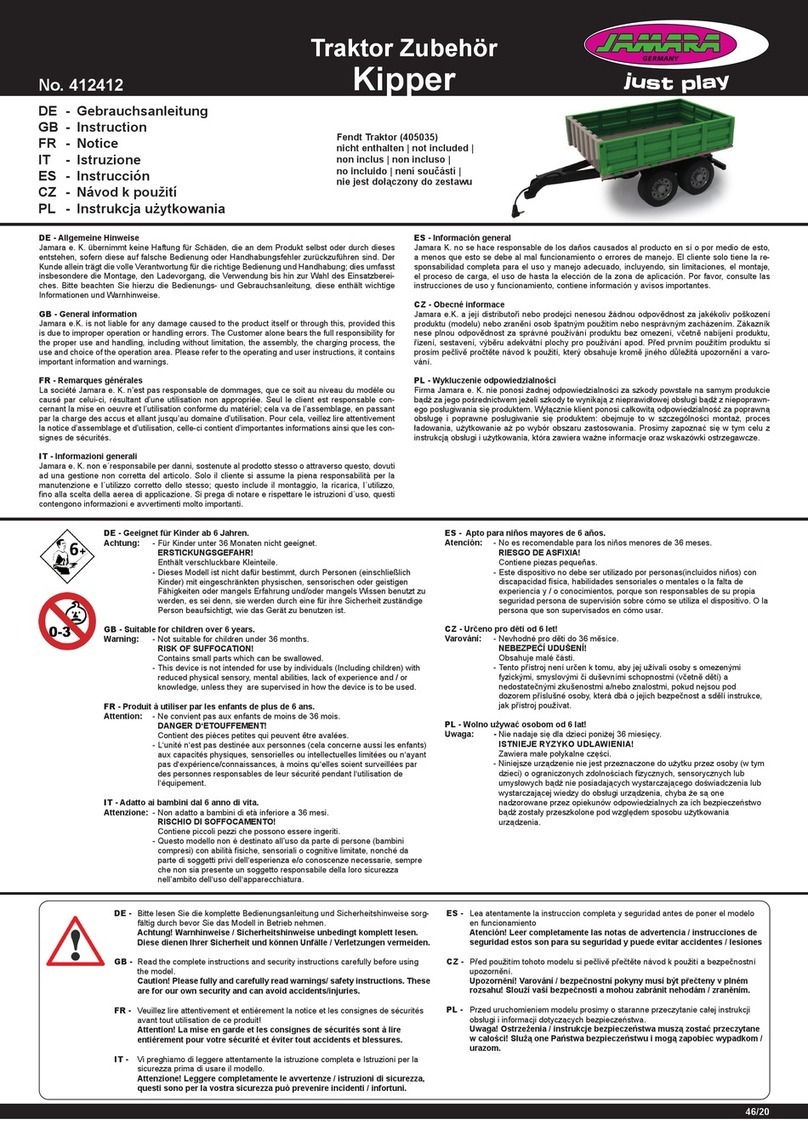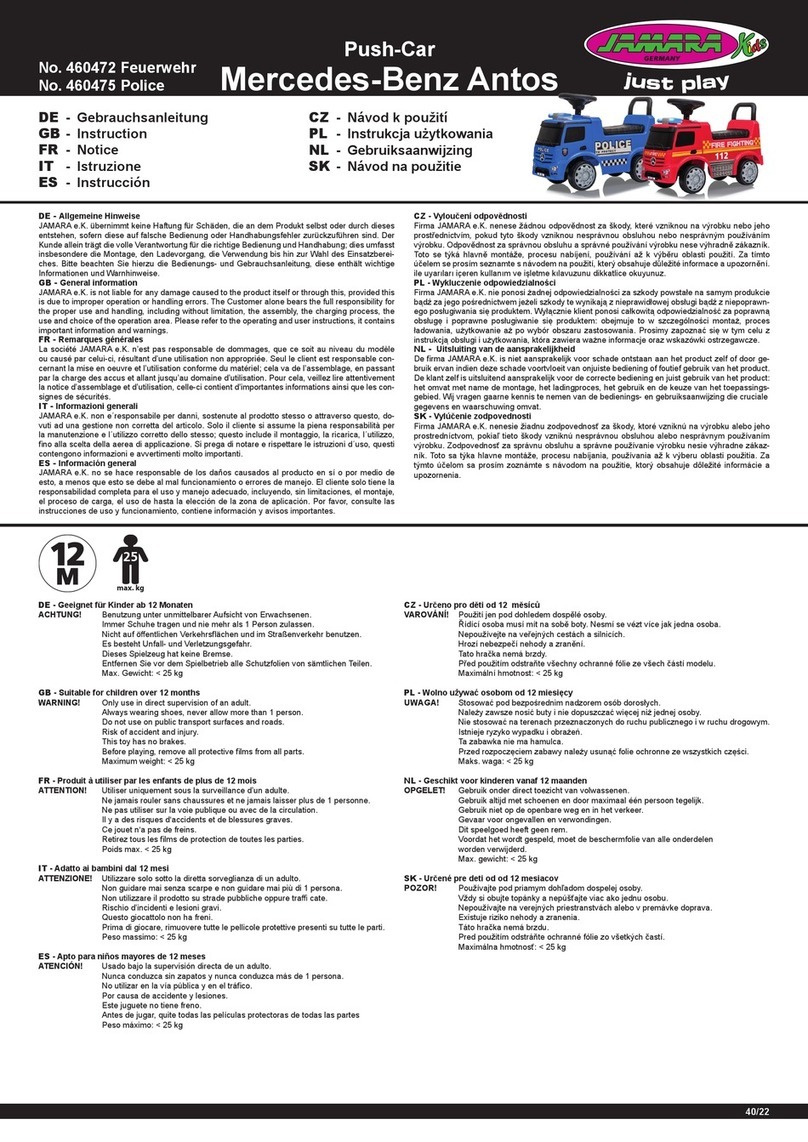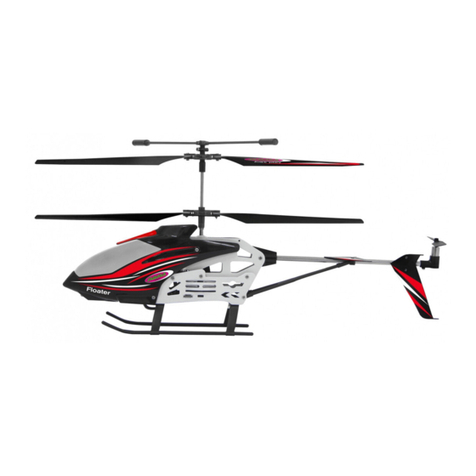
20/16
IT - Informazioni generali
Jamara e. K. non e´responsabile per danni, sostenute al prodotto stesso o attraverso questo, dovuti
ad una gestione non corretta del articolo. Solo il cliente si assume la piena responsabilità per la
manutenzione e l´utilizzo corretto dello stesso; questo include il montaggio, la ricarica, l´utilizzo,
no alla scelta della aerea di applicazione. Si prega di notare e rispettare le istruzioni d´uso, questi
contengono informazioni e avvertimenti molto importanti
ATTENZIONE!
In molti paesi l‘ impiego di modelli radiocomandati richiede una assicurazione obbligatoria. Infoirma-
tevi perciò presso il vostro assicuratore o poresso il vostro negoziante di ducia.
GB - General Information
Jamara e.K. is not liable for any damage caused to the product itself or through this, provided this
is due to improper operation or handling errors. The Customer alone bears the full responsibility for
the proper use and handling, including without limitation, the assembly, the charging process, the
use and choice of the operation area. Please refer to the operating and user instructions, it contains
important information and warnings.
Attention!
In some countries it is a legal requirement to carry third party indemnity insurance when operating
a radio controlled model. Please ask your local dealer, governing body or your insurance company
for details.
Articolo di modellismo – Non è un giocattolo
Adatto a persone dai 14 anni in su.
Attenzione: Non adatto a bambini sotto i 36 mesi. PERICOLO DI SOFFOCAMENTO.
Contiene piccole parti che possono essere inghiottite.
Tenere lontano da bambini piccoli.
GB - This model is not a toy!
Not suitable for people under 14 year.
Warning: Not suitable for children under 36 months. RISK OF SUFFOCATION!
Contains small parts which can be swallowed.
Keep away necessarily from children.
No. 006144 Air Trainer 46
DE - Istruzioni di montaggio
GB - Instruction
Highlights:
• Fusoliera in balsa e compensato • Ala centinata in costruzione tradizionale
• Kit in legno • Ideale per principianti • Taglio a Laser
Funzioni: • Alettone • Profondità • Direzionale • Motore
Contenuto del kit: • Modello • Ruote • Filo metallico per carrello • Scatola ricca di accessori
• Istruzioni/Piani di costruzione
Accessori consigliati:
Motore elettrico A2820/6 13 2820
Elica APC 10 x 7 34 0061
4 x Servi Nitro Q7 JR 03 3215
3 x Servi elettrico Q7 JR 03 3215
Batteria 14,8 V 3700 mAh 14 1380
Trasmittente FCX 6 Pro Tel 2,4 GHz 06 1260
Dati tecnici:
• Apartura alare: ~ 1600 mm • Lunghezza ~ 1240 mm • Peso: ~ 1900 g
S.E. & O.
Highlights:
• Fuselage made of balsa and plywood • Wings made of wood in rib construction
• Wooden construction kit • Ideal to have with you at all times • Laser cut kit
Functions: • Aileron • Elevator • Vertical n • Throttle
Box contents: • Modell • Wheels • Undercarriage • Accessories • Instructions/Planes
Recommended accessories
Electric motor A2820/6 13 2820
Propeller APC 10 x 7 34 0061
4 x Servos Nitro Q7 JR 03 3215
3 x Servos Electric Q7 JR 03 3215
Battery 14,8 V 3700 mAh 14 1380
Transmitter FCX 6 Pro Tel 2,4 GHz 06 1260
Technical data:
• Wing span: ~ 1600 mm • Length: ~ 990 mm • Weight: ~ 1240 g
No responsibility is taken for the correctness of this information. Subject to change without prior
notice. Errors and omissions excepted
Montaggio dell‘ala destra
Attenzione!!
L‘ala è la parte più importante del tuo aereo, lavora molto attentamente con l‘incollaggio,
prenditi il tuo tempo per fare tutto correttamente!
The following steps are showing right wing.
Caution!!
Main wing is one of the most important parts of air plane. Adhering slip-o between the right
and the left wings may give a great inuence upon the ying performance and your airplane
may come apart while ying due to incomplete adhering. Accurately build the wings and
completely adhere them.
Montaggio dell‘ala destra
Posizionare le parti W3 e W2 sul piano di lavoro. Posizionare
il listello W3 sul fondo di W2. Utilizzare un angolo per incollare
saldamente il listello.
Nota: Assicurarsi che le due parti (W2 e W3) siano ad un angolo
di 90° l‘una dall‘altra.
The following steps are showing right wing.
Place the W3 hard wood strip and W2 on the working table. Use
instant glue to secure the W3 on the bottom of W2; make sure
the alignment of both bottom lines.
Hint: you can use triangle ruler when secure W3 on W2.
Fissare le centine delle ali W8 - W9 (vedi piano di sequenza) al
longherone (longherone principale W2/W3). Dopo aver ssato le
centine ai longheroni, allinearle con un angolo di 90° rispetto al
longherone principale e incollarle.
Refer to the assemble drawing inside the box and t ribs W8
– W9 onto the W2 combination. Use triangle ruler between the
ribs and W3; make sure the angle is 90 degree and drop some
instant glue to secure ribs in place.
Incollare il listello W2 alla parte superiore del listello principale.
Try to t W2 on the top of the middle beam and use instant glue
to secure it in place.


